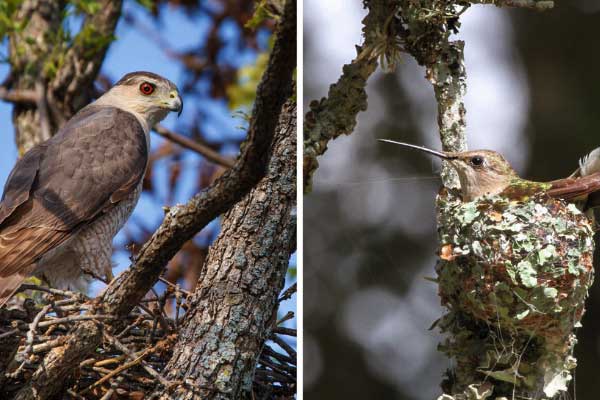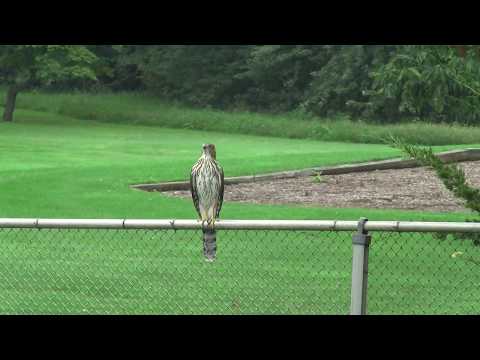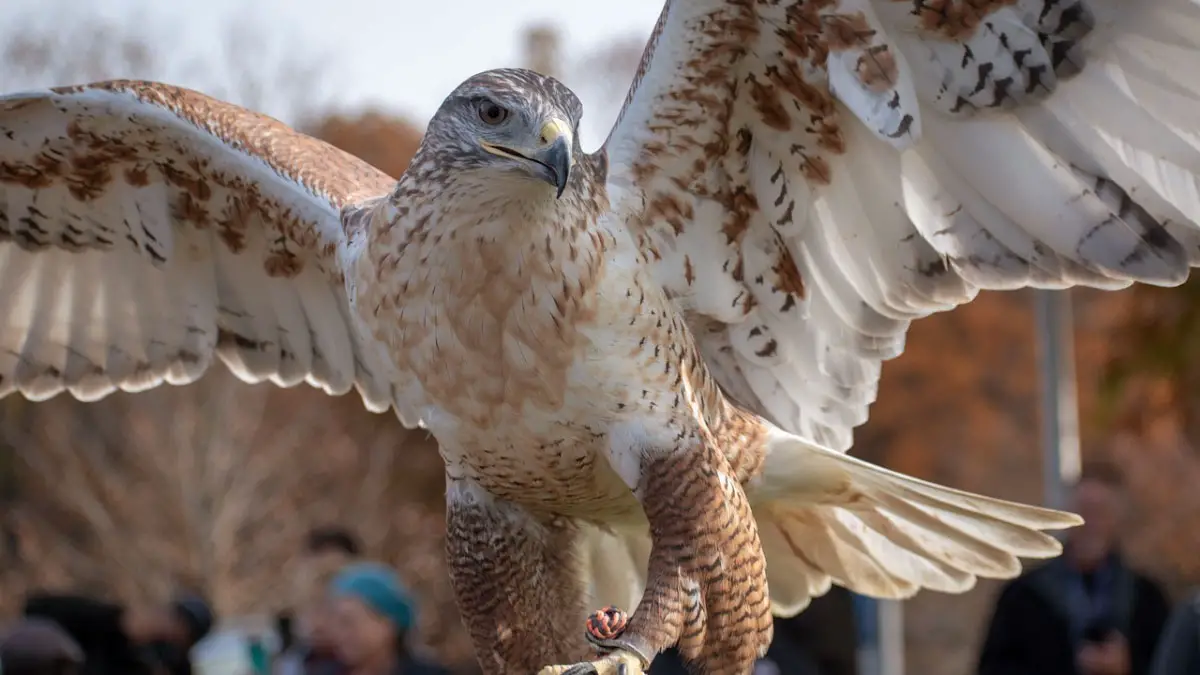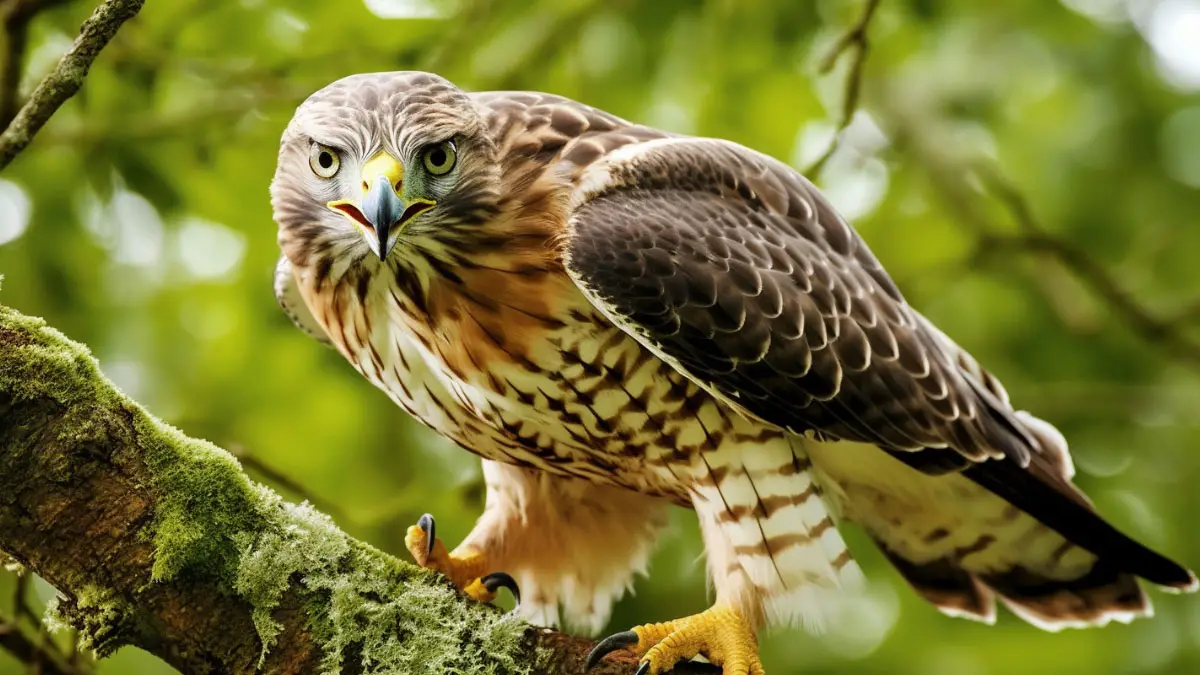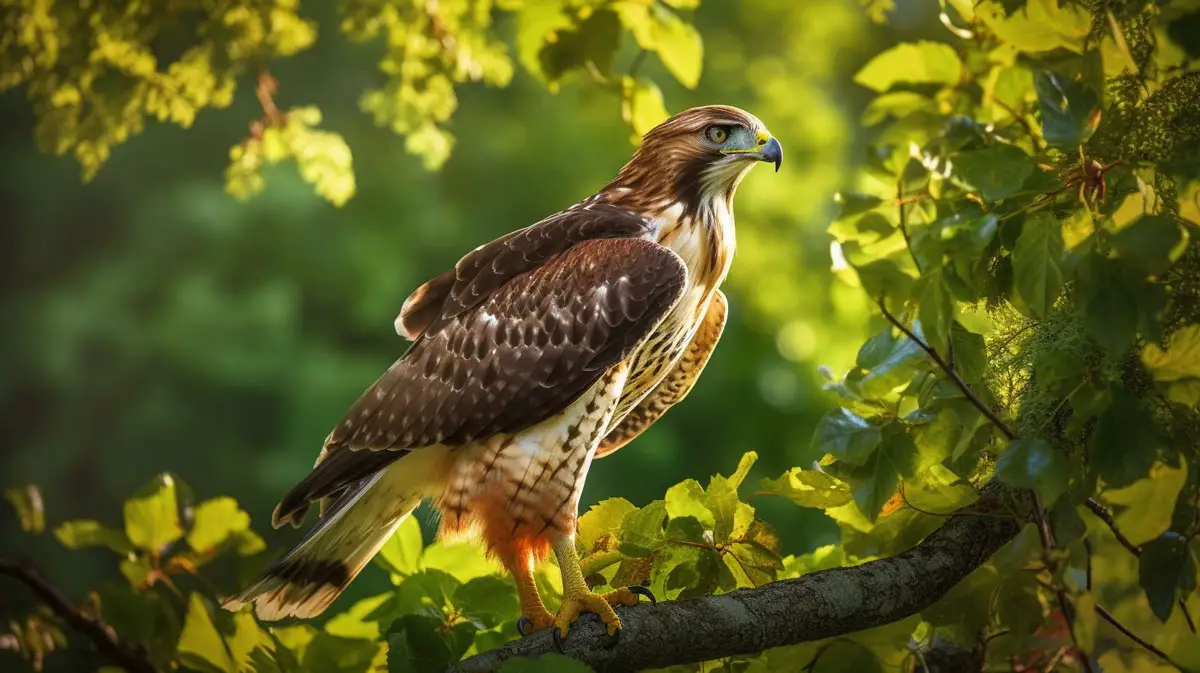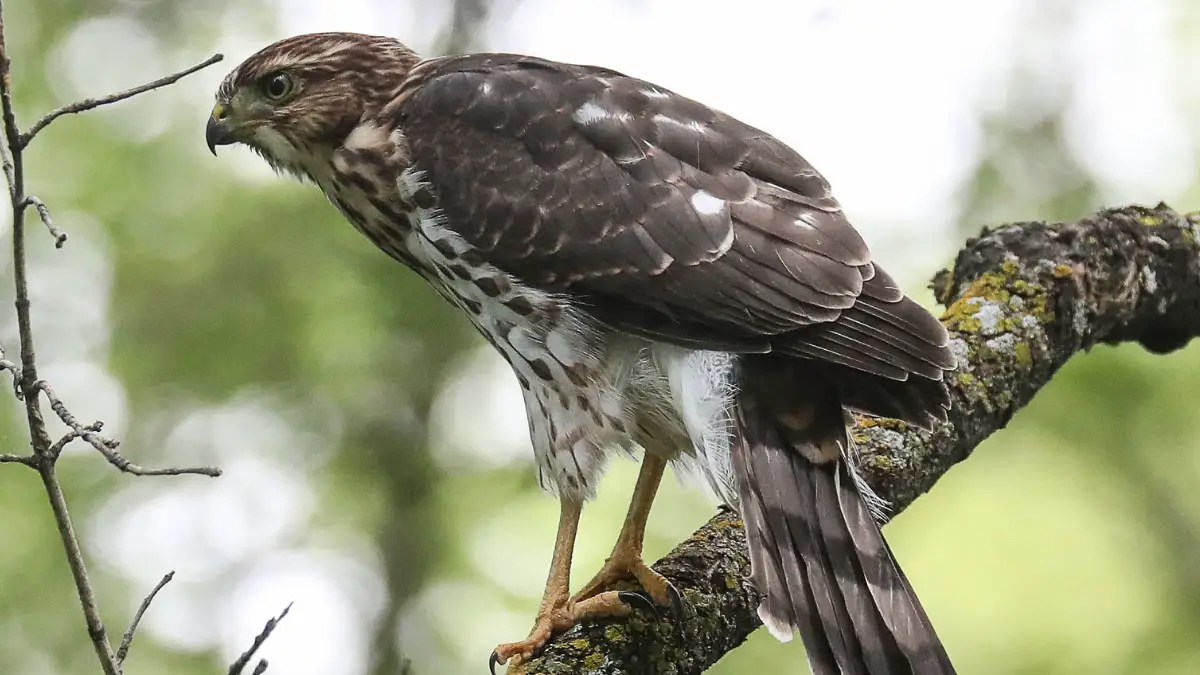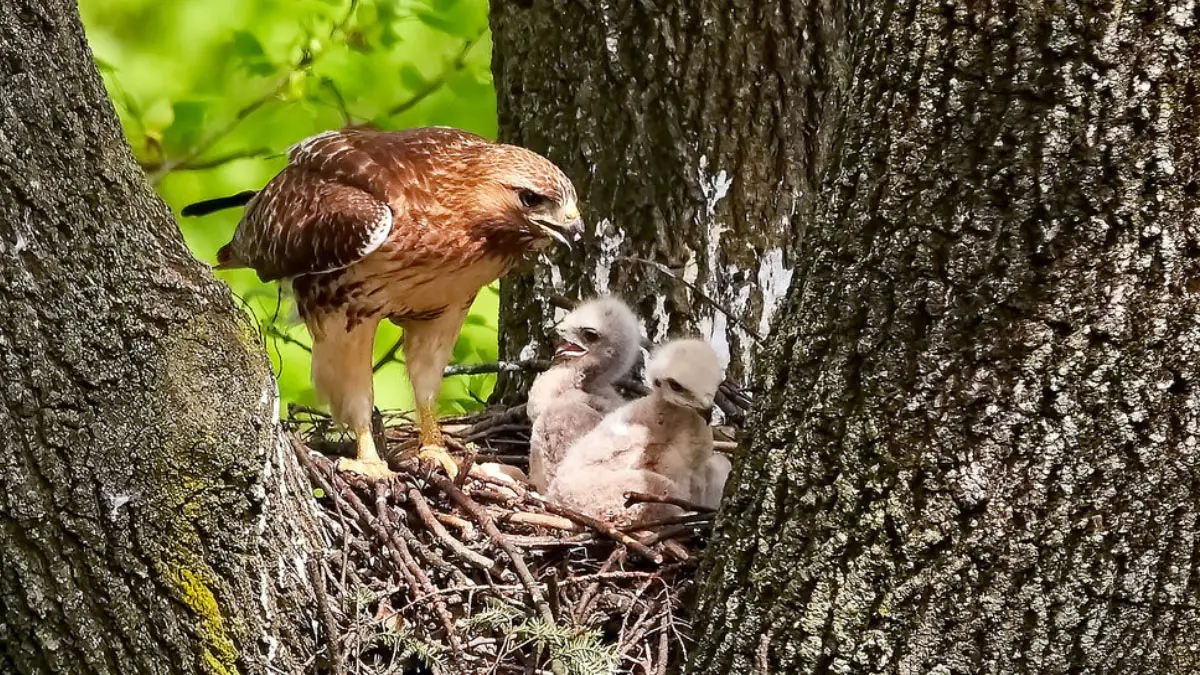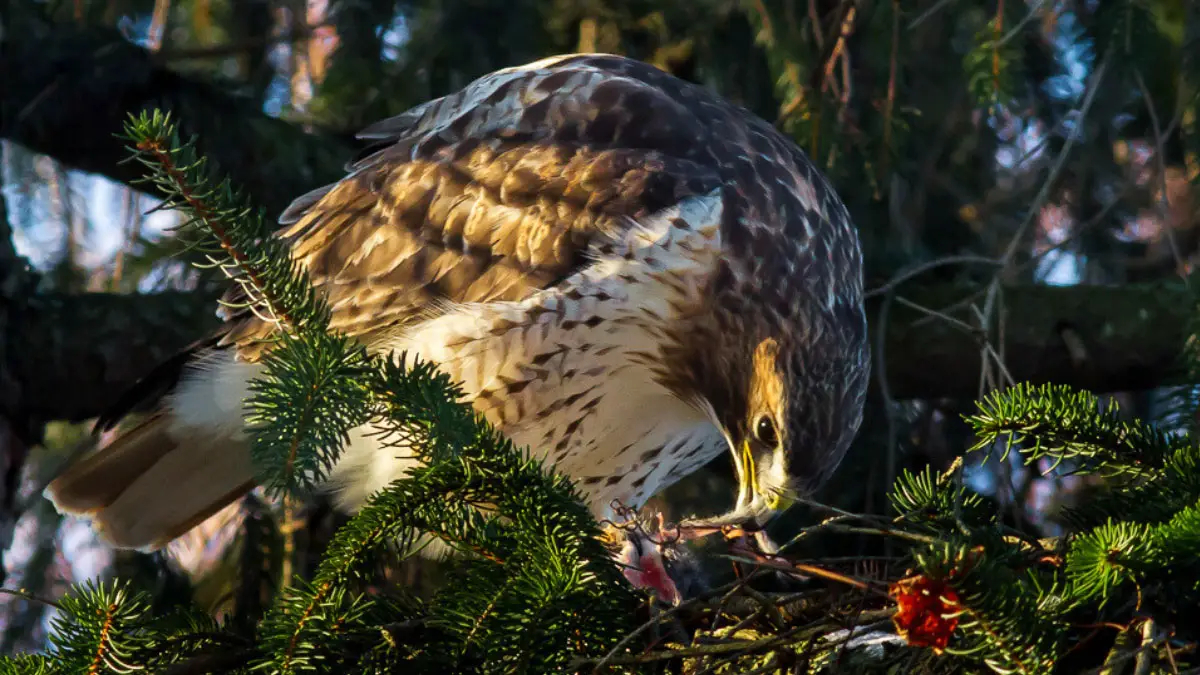Being one of the smallest birds, hummingbirds remain a target of most predators. In most cases, the jay is the greatest threat to the hummingbird eggs and their babies. To survive in such environments, hummingbirds build their nests near hawk’s nests for protection.
So, do hawks eat hummingbirds? Hawks do not eat hummingbirds. However, hawks are known to be some of the best friends of hummingbirds as they offer security and protection to hummingbirds. Research from bird watchers shows that most hummingbird nests are built near the hawks’ nests.
Through our research team, we shall discuss the various techniques hawks use to kill their prey. Also, we shall extensively look into what kind of hawks eat hummingbirds.
Do Hawks Eat Hummingbirds?
Hawks eat hummingbirds in extreme conditions. However, in the right conditions, hummingbirds do enjoy the safety from their natural enemies by residing around the hawks’ nests.
By being one of the tiniest bird species, the hawks have little preference for them. Hawks will hunt and kill huge catches weighing around 2 to 3 pounds. Such a meal will keep the hawk full for a day. Therefore, Hawks have little to no interest in the tiny bird and their eggs.
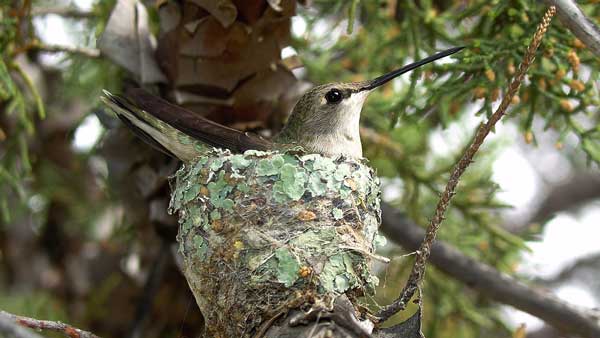
Hummingbirds nest near hawks. Tiny hummingbird eggs and babies are a favourite snack for nest-robbing jays, so what’s a mother hummingbird to do to protect her family? According to a study published recently in the journal, Science Advances, the hummingbird cleverly builds her nest near or under a hawk nest.
The reason for this seemingly risky behaviour? When hawks are nesting nearby, jays forage higher above the ground to avoid being attacked from above by the hungry hawk parents. This elevation in the jays’ foraging height creates a cone-shaped jay-free safe area under the hawk nests where mother hummingbirds, their babies and nests, enjoy dramatically increased survival rates.
To also hide from predators such as the blue jay, hummingbirds have their nests perched in trees with thick foliage. The thick foliage offers a barricade to any natural enemy trying to reach the hummingbird nests.
Why a hawk is a hummingbird’s best friend?
Sometimes it pays to have big, bad neighbors. Weighing in at about 3 grams, black-chinned hummingbirds (Archilochus alexandri) can do little but stand by and watch Mexican jays 40 times their weight chow down on their eggs.
So in the mountains of southeastern Arizona, the hummers have learned to build their nests near goshawk and Cooper’s hawk nests (Accipiter gentilis and Accipiter cooperii). Almost five times bigger than the jays (Amphelocoma wollweberi), the hawks enjoy these birds for lunch. So to avoid hawks swooping down and surprising them, the jays only forage above the hawks’ nests.
Thus a cone-shaped safe zone exists below the 20-meter-high hawk nests, extending out about 100 meters, researchers report today in Science Advances. Of 342 hummer nests studied over three years, 80% were near hawk nests—and for good reason.
The researchers monitored hummingbird egg and fledgling survival near six active and six inactive hawk nests. Those hummers unlucky enough to be near inactive nests lost all but 8% of their young, while those in a “good” neighborhood had a 70% success rate, they report. Hawks could eat the hummingbirds, but these morsels are too small and agile to be worth the effort, the researchers note.
This phenomenon, in which one species is changing the behavior of another and benefitting a third species is called a trait-mediated trophic cascade, and is similar to what happened in Yellowstone National Park when the introduction of wolves changed the behavior of elk, which may have benefited shrubs and trees that the elk fed on.
How Does A Hawk Kill A Hummingbird?
Hawks are built with strong hunting attributes. Their claws and beak are strong enough to carry out successful hunting. Hawks are adapted to attacking large prey; hence attacking and killing a hummingbird is an easy task.
Unlike the falcons, hawks kill their prey using nails. Hawks will squeeze and crash the hummingbird causing internal organ breakages. The hawk also attacks the prey at weak points such as the spine and the neck.
Sometimes, the hawk will swoop down and knock down the prey with its beak. The beak is strong enough to hit its prey to death. Hummingbirds being small in size, are picked from the ground or at the bird feeder points and then killed.
Hawks do not necessarily remove the feathers; they feed on the whole carcass. It is worth noting that hawks can eat up to 10 hummingbirds daily. This, too, explains why the hawks will not feed on these little birds that often. Hawks prefer a large catch that is enough to last a day or two.
Which Hawk Eats A Hummingbird?
Even though the birds enjoy security from the hawks and other birds of prey, some hawks will eat the hummings in extreme drought conditions or when in juvenile. Below are some of the hawk species that feed on the hummingbirds.
Sharp-shinned hawks
Sharp-shinned hawks pose the greatest threat to the hummings. Most attack cases are recorded in yards and gardens in North America. These small hawk species enjoy feeding on these birds by camouflaging in the hawks’ nests around them.
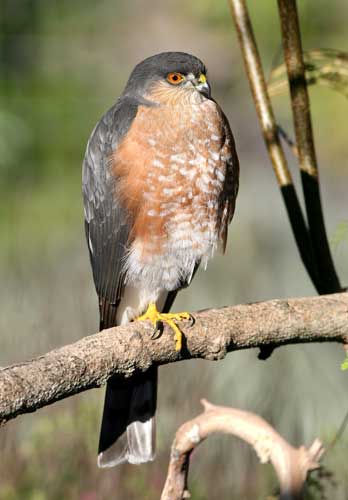
American Kestrels
They are also known as the sparrow hawk, the smallest falcons found mostly in North America. The American kestrels can see UV light hence improving their hunting capacity.
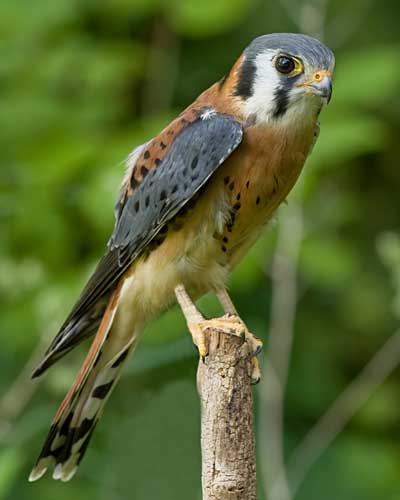
These birds of prey are known to hunt the hummingbird in groups, especially when looking for nests. They also feed on the hummingbird eggs.
Merlins
Merlins feed largely on small to medium-sized birds such as hummingbirds. They may also feed on the insects and rodents to supplement their diet. Merlins are seen attacking the hummings’ nests to hunt for the birds.
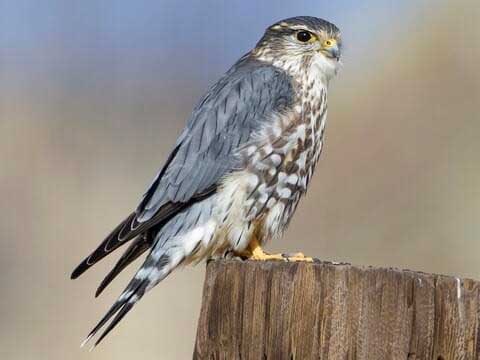
The little hummingbirds are at great risk of being attacked while feeding on the bird feeders. In rare cases, merlins attack their nest and eat the tiny eggs and young ones.
Mississippi Kites
One of the incredible features of these bird species is their dark head and neck with pale under tail feathers that make them almost invisible. With small size birds being its favorite meal, they feed on the hummingbirds at dusk and dawn.
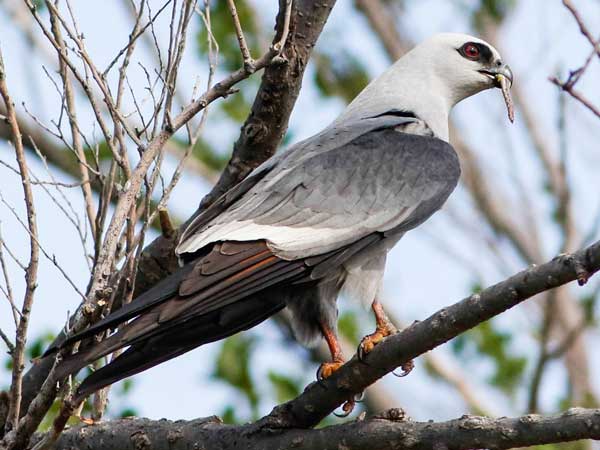
Their strong talons hold the birds in stiffness and suffocate them before tearing the flesh with their beaks.
Loggerhead Shrikes
These species have a similar body shape to the hummingbirds but large with a carnivorous beak. The shrikes are grouped as birds of prey as they hunt, kill and feed on other birds and small mammals such as the hummingbirds, lizards, and rodents.
Loggerhead shrikes feed on hummingbirds in their long food chain that consists of small insects.
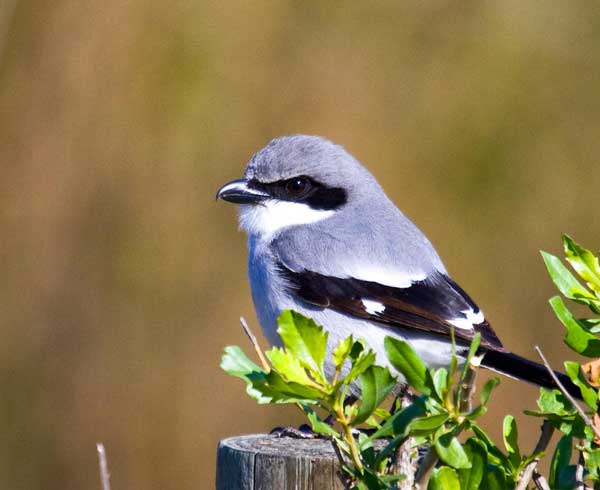
To add to this, hummingbirds are predated by many natural enemies. This threat has forced them to live and associate with the hawks, especially the red-tailed hawks, for safety from other hummingbird predators.
What Materials Do Hummingbirds Use To Build Their Nests?
With their nectar-feeding beaks, hummings build their nests with soft fluffy materials that they collect from various plants and grass.
The pasque flowers are most preferred by hummingbirds due to their sweet nectar and the silk hairs the little birds use to cushion their nests. These birds also use the soft fuzzy foliage from the grass and tree leaves to make their nests.
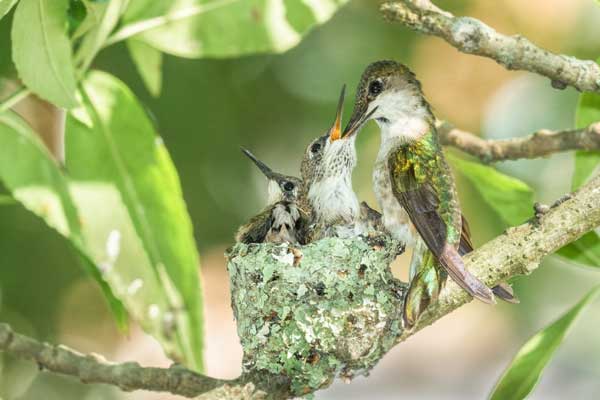
These tiny bird species weave their nests using their beak. They use hard and strong foliage on the outside and soft fluffy materials to offer a comfortable environment for the tiny birds and their delicate eggs.
What Do Hummingbirds Feed On?
Hummings are insect and nectar feeders. They feed on tasty nectar from flowers for the protein in the pollen. When feeding their chicks, hummingbirds feed them on insects to boost their protein levels.
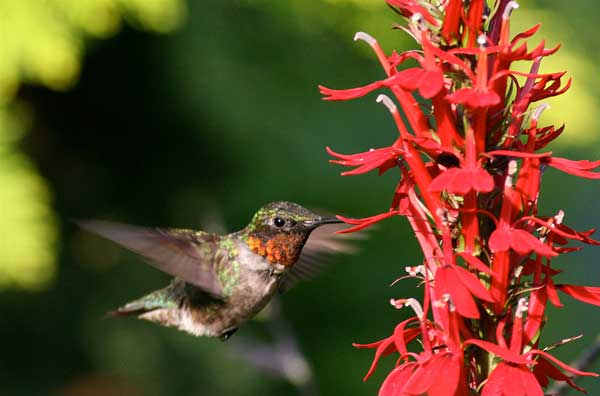
Nectar from flowers or sugar water solutions in bird feeders serves as the common food for hummingbirds. They seek more protein to get energy for the high metabolism and swift speed flights.
FAQs
Below are a few questions about the relationship between a hawk and a hummingbird. These questions have been answered to satisfy your expectations.
Hummingbirds are one of the smallest bird species. Bird watchers attach cameras to birds to follow their movement and behavior. This, however, might affect the birds’ natural comfort.
With technological advancement, studying birds has been simplified by the use of drones and high-resolution cameras.
Interesting how hawks act as security to the bird’s nest. The greatest hummingbird threat is the blue jay; building their nests below the hawks’ nests assures them of safety.
When the jays want to attack the hummingbird’s eggs, they encounter the raptor’s nests, which greatly threaten them.
Final Verdict
Hawks seem to prefer large catches for a meal. With the hummingbird being a tiny bird species, they manage to survive through the food chain.
Despite hawks being opportunistic predators, they seem to have a cordial relationship with the hummingbirds. Hawks may, on a rare occasion, attack the hummingbird nest. However, in most cases, hummingbirds enjoy security from these larger birds of prey.
Hawks nests help protect the hummingbirds from possible attacks by predators such as the blue jay.
Do you want to know if hawks eat chickens or bunnies? Read our articles about it to learn more.
